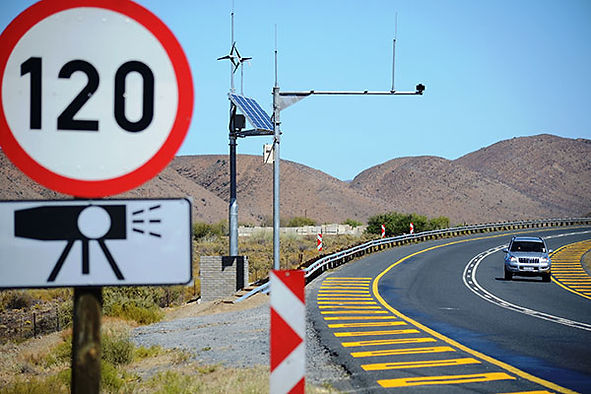


6 Recommendations on Automated Speed Enforcement
Recommendations for the Deployment of Automated Enforcement Systems for Stakeholders
Improving road safety in low- and middle-income countries

Many Lower- and Middle-Income Countries (LMICs) are experiencing a serious and growing crisis in road fatalities and injuries, with excessive speed being a major factor.
Safe Speeds is one of the five pillars of the Safe System Approach to road safety. Vehicle speed plays a critical role in determining the risk of an accident - when speeds are too high, the risk and severity of accidents increase dramatically, often leading to fatal outcomes. Maintaining speeds at safe levels is important not only for reducing the severity of accidents but also for supporting the long-term economic growth of a country.
Automated Speed Enforcement (ASE) has proven to be an effective and cost-efficient tool in addressing the issue of speeding. While most of the existing research on ASE focuses on high-income countries, TRANS-SAFE is exploring whether similar positive effects can be achieved in LMICs. Rwanda serves as a case study for this investigation, as it has pioneered the use of ASE technology for speed management.
In our report, Recommendations for the Deployment of Automated
Enforcement Systems for Stakeholders, TRANS-SAFE presents six key recommendations and guidelines for implementing Automated Speed Enforcement across other LMICs, with a particular emphasis on the African continent.
Key facts from Rwanda's ASE program:
29.7
road fatalities per 100,000 people
400
varying types of ASE cameras in use
Fair fines
the majority of frequent drivers consider the fines to be fair
17%
decrease in average car speed
Reduction
in serious injuries
6 ASE recommendations

ASE as road safety tool
Recent studies consistently demonstrate that speed cameras serve as an effective intervention for reducing vehicle speeds, which primarily contributes to lower the number of accidents, injuries, and traffic fatalities.
© Vitronic
Essential collaboration with local & international partners
Early and sustained engagement with a wide range of partners, such as the police, policymakers, ASE system manufacturers, international road safety organizations, nations with extensive experience of ASE, research institutes, community leaders, and the public, is vital for the success and acceptance of ASE programs.


ASE should have safety as priority
ASE should deter, not catch, speeding drivers. In other words, ASE is intended to enhance road safety, not to generate profit! This focus on safety is reflected in stakeholders’ decision regarding camera placement, warning signs, fine thresholds, the quality of camera equipment, and the management of collected revenue.
© Braimah Abdulrasak
Road users should be included and given adequate information about ASE implementation
When people perceive speed management as excessively restrictive, costly, or inefficient, they are less inclined to support these measures. Therefore, stakeholders should properly plan a campaign and warning to ensure the successful implementation of ASE.


Frequent research for optimal implementation & evaluation strategies
High-quality data systems are essential for accident studies. It is recommended to use the Africa Transport Policy Program's 2021 guide on the minimum set of road safety indicators to improve data quality in preparation for ASE programs.
© Uganda Police Force
Automated speed enforcement alone does not solve all road safety issues
Several studies in LMICs have found that the effectiveness of ASE is often limited to its specific enforcement area. Therefore, ASE should be considered as just one component of a broader speed management strategy. In short, ASE should be integrated holistically with other pillars of the Safe System Approach.

© Uganda Police Force

Demo project
Kigali, Rwanda
Rwanda has the highest road fatality rate among East African nations.
Rwanda National Police introduced an ASE program, aiming to reduce excessive speeding and improve road safety using advanced technology.
From a small-scale study, the plan has now expanded across Rwanda’s road network, and the program is already achieving results.